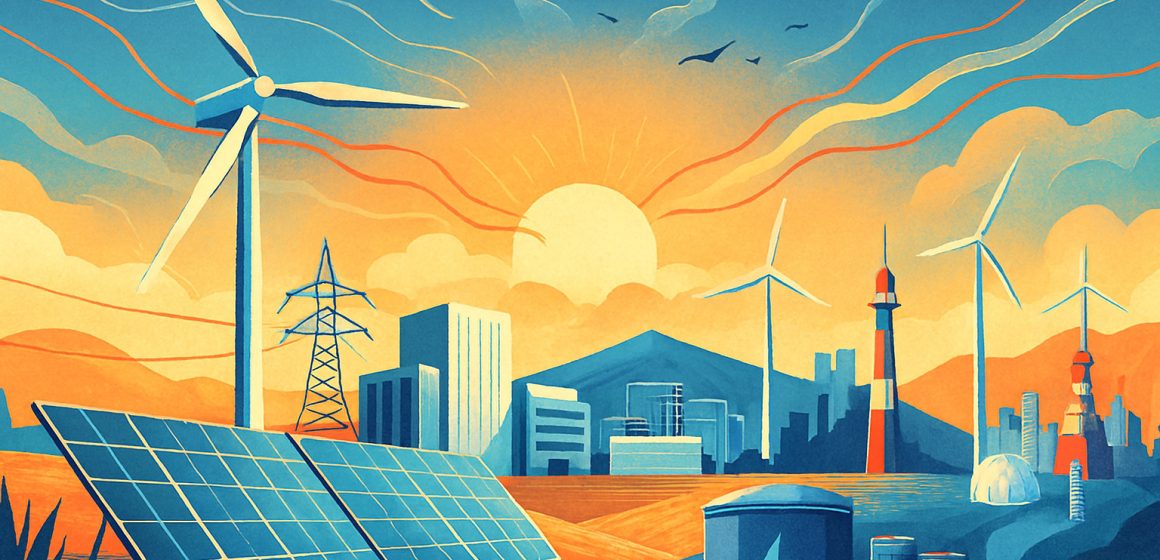India’s 2030 clean energy goals will be powered by synchronised renewables, grid upgrades, and market reform, says the Ministry of New and Renewable Energy.
India’s renewable energy sector is entering a transformative phase, defined not just by capacity growth but by system strength and resilience. After a decade of record expansion, the Ministry of New and Renewable Energy (MNRE) is now steering the sector toward a robust, dispatchable clean energy architecture to meet the 500 GW non-fossil target by 2030.
In the last decade, India’s renewable capacity has grown fivefold, from under 35 GW in 2014 to over 197 GW today (excluding large hydro). This exponential growth has reached a point where the next leap demands deeper system reforms.
The sector is transitioning from capacity expansion to capacity absorption. MNRE is now addressing grid integration, energy storage, hybridisation, and market design towards a 500 GW-plus future. The recent moderation in capacity addition reflects a strategic recalibration to ensure future growth is stable, dispatchable, and resilient.
India’s renewable growth remains among the fastest globally, driven by multi-pathway expansion. Over 40 GW of awarded projects are in advanced stages of securing Power Purchase Agreements (PPAs), Power Sale Agreements (PSAs), or transmission connectivity. This robust pipeline has outpaced the readiness of grid and contractual institutions, a challenge common to all large-scale energy transitions.
In this context, enforcement of Renewable Purchase Obligations (RPOs) by state discoms, transmission upgrades, and digital grid integration remain top priorities before scaling up new bids.
In 2025, central renewable energy implementing agencies (REIAs) will have bid out 5.6 GW, while state agencies will have tendered 3.5 GW. Commercial and industrial consumers are expected to add nearly 6 GW independently. Capacity addition is progressing through multiple pathways, not just REIA-led bids.
Global headwinds such as supply chain disruptions, volatile module prices, and tighter financing have slowed commissioning timelines. Yet India continues to add 15-25 GW annually, maintaining its global leadership in clean energy deployment.
Policy Shift to Resilience
Over the past two years, policy focus has shifted from pure capacity growth to system design. Auctions now favour renewable-plus-storage and peak power supply. Battery energy storage systems (BESS) are being integrated at the grid and project levels, marking the emergence of a new market.
Domestic manufacturing, supported by the Production-Linked Incentive (PLI) scheme, the Domestic Content Requirement, Approved List of Models and Manufacturers (ALMM), and duty exemptions, is reducing import dependency and building industrial depth.
The recalibration of GST structures and ALMM provisions reflects a strategic consolidation phase, aligning fiscal policy with the twin goals of value chain localisation and technology assurance. These adjustments are stabilising costs, enhancing module reliability, and promoting scale efficiencies in India’s maturing solar manufacturing ecosystem.
Battery storage deployment is advancing through viability gap–funded projects, sovereign tenders, and emerging storage obligations, laying the foundation for firm, dispatchable renewable capacity. These transitions may not yield immediate capacity surges, but they represent lasting structural progress.
Transmission Unlocks 200 GW
Transmission is the new frontier. The ₹2.4 trillion Transmission Plan for 500 GW aims to connect renewable-rich states with demand centres. The centre is prioritising investment in green energy corridors and high-capacity lines from Rajasthan, Gujarat, and Ladakh. Once operational, these will unlock over 200 GW of new capacity.
The government has also planned high voltage direct current (HVDC) corridors and inter-regional upgrades to raise transmission capacity from 120 GW today to 143 GW by 2027, and 168 GW by 2032.
Amendments to the CERC General Network Access (GNA) Regulations, 2025, have improved transmission readiness. Time-segmented access—‘solar-hours’ and ‘non-solar-hours’—enables dynamic corridor sharing between solar, wind, and storage. Source flexibility, stricter connectivity norms, and substation-level transparency are curbing speculative allocations and fast-tracking stranded projects.
Despite short-term delays, India remains a magnet for clean energy capital. Tariffs are among the lowest globally, and investor interest remains strong. Global players are not exiting; rather, they are repositioning toward integrated, storage-backed portfolios. Fundamentals like demand growth, policy continuity, and cost competitiveness remain intact.
Expansion to Integration
The deeper story is one of evolution, not erosion. India’s clean energy transition is entering a phase where the core challenges are integration, reliability, and scale efficiency. A temporary flattening of the project pipeline signals maturity, not stagnation.
The sector is now aligning renewables with grid infrastructure, financial discipline, and long-term market design. Virtual Power Purchase Agreements (VPPAs) will play a pivotal role, enabling corporate buyers to contract renewable power virtually, decoupled from physical delivery. VPPAs deepen demand, offer price certainty, and stimulate investment in projects awaiting grid access.
Coupled with green attribute trading, market-based ancillary services, and real-time market integration, these instruments are building a flexible, demand-driven ecosystem. They are being embedded into the Electricity (Amendment) Bill and CERC regulations, with enabling support from MNRE and the Ministry of Power.
The next growth phase is already underway. Large hybrid and round-the-clock (RTC) projects are advancing across Rajasthan, Gujarat, and Karnataka. Offshore wind and pumped hydro storage are gaining traction. Distributed solar and agrovoltaics under PM Surya Ghar and PM KUSUM are deepening rural participation. The National Green Hydrogen Mission is linking renewables with industrial decarbonisation. Strengthening of the third phase of the Green Energy Corridor will further integrate clean power.


